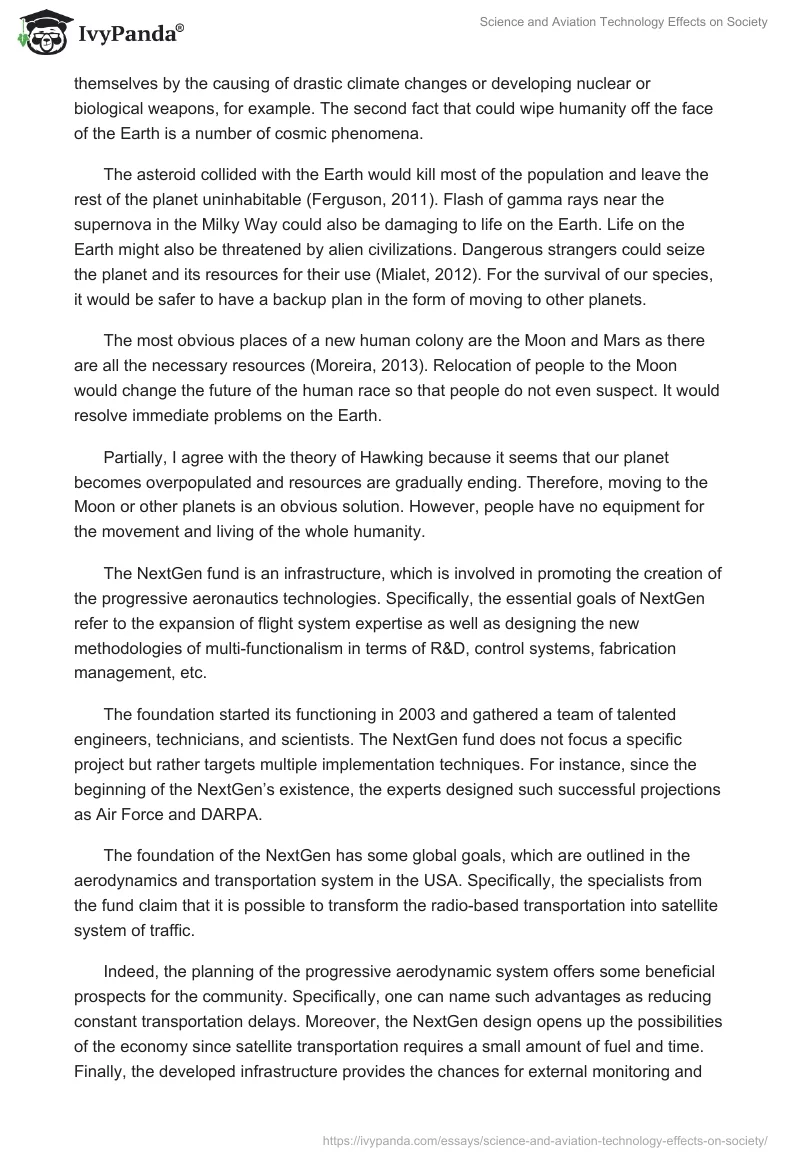Usually, users become lawbreakers even if they do not know about it exposing to the serious law violation. There are significant risks of crashes and data loss, theft of personal information including the identity of the access to banking tools, and virus attack. Moreover, when one downloads music, video, or software from the illegal website, he or she might find it malicious or unwanted.
However, the very act of innovation might be ethically right or wrong act to some extent. For example, recent advances in biomedical research (pharmacokinetics, stem cell research, regenerative medicine) open up broad prospects, but they raise questions concerning the responsible use of new technologies and the resulting knowledge about them. Another example is Spector Pro website that would collect all the information about phone user comprising calls, e-mails, activity on the Internet. It is not an evil “if you catch a stalker targeting your child” (Mollman, 2008, para. 17). However, it is still ethically inappropriate. The following technologies produced the most benefit: cell phones, the Internet while tobacco and alcohol production are considered produced the most harm (Unger, 2014).
There also harmful benefits to the beneficial technology, and conversely, benefits from the harmful ones. For instance, e-mail service that allows reacting promptly to events and communicating with those who do not have the opportunity to meet each other in real life (Belcher, n.d.). No doubt, that it is always a pleasure to talk with an old friend who had gone abroad for a number of years ago without spending a penny. Moreover, the Internet along with TV should be mentioned. These services allow not only spending time having fun but also being aware of the latest news. Nevertheless, examples noted might harm in the case of piracy or inappropriate use (Unger, 2014).
English physicist Stephen Hawking predicted the demise of humankind on Earth in the next thousand years if people do not find a hiding place in the cosmos. If humanity is to survive in the long term, it needs to find a way to leave the Earth (“Stephen Hawking: Why We Should Go Into Space”, n.d.). In the case, if people stuck on Earth, they would face the risk of two different disasters. The first people would create themselves by the causing of drastic climate changes or developing nuclear or biological weapons, for example. The second fact that could wipe humanity off the face of the Earth is a number of cosmic phenomena.
The asteroid collided with the Earth would kill most of the population and leave the rest of the planet uninhabitable (Ferguson, 2011). Flash of gamma rays near the supernova in the Milky Way could also be damaging to life on the Earth. Life on the Earth might also be threatened by alien civilizations. Dangerous strangers could seize the planet and its resources for their use (Mialet, 2012). For the survival of our species, it would be safer to have a backup plan in the form of moving to other planets.
The most obvious places of a new human colony are the Moon and Mars as there are all the necessary resources (Moreira, 2013). Relocation of people to the Moon would change the future of the human race so that people do not even suspect. It would resolve immediate problems on the Earth.
Partially, I agree with the theory of Hawking because it seems that our planet becomes overpopulated and resources are gradually ending. Therefore, moving to the Moon or other planets is an obvious solution. However, people have no equipment for the movement and living of the whole humanity.
The NextGen fund is an infrastructure, which is involved in promoting the creation of the progressive aeronautics technologies. Specifically, the essential goals of NextGen refer to the expansion of flight system expertise as well as designing the new methodologies of multi-functionalism in terms of R&D, control systems, fabrication management, etc.
The foundation started its functioning in 2003 and gathered a team of talented engineers, technicians, and scientists. The NextGen fund does not focus a specific project but rather targets multiple implementation techniques. For instance, since the beginning of the NextGen’s existence, the experts designed such successful projections as Air Force and DARPA.
The foundation of the NextGen has some global goals, which are outlined in the aerodynamics and transportation system in the USA. Specifically, the specialists from the fund claim that it is possible to transform the radio-based transportation into satellite system of traffic.
Indeed, the planning of the progressive aerodynamic system offers some beneficial prospects for the community. Specifically, one can name such advantages as reducing constant transportation delays. Moreover, the NextGen design opens up the possibilities of the economy since satellite transportation requires a small amount of fuel and time. Finally, the developed infrastructure provides the chances for external monitoring and managing airspace. Conclusively, I believe that the plan of the NextGen aerospace moderation may be successfully implemented. However, it is critical to involve extensive government support into the system of modification so that to supervise and guide global changes.
References
Belcher, L. (n.d.). Advantages and Disadvantages of Technology Advances. Web.
Ferguson, K. (2011). Stephen Hawking: His Life and Work. London: Bantam.
Mialet, H. (2012). Hawking Incorporated: Stephen Hawking and the Anthropology of the Knowing Subject. Chicago: The University of Chicago Press.
Mollman, S. (2008). Technology Posing Ethical Questions. Web.
Moreira, W. (2013). The Big Nest Originated the Big Bang of Stephen Hawking’s Black Holes. Bloomington, IN: IUniverse Com.
Stephen Hawking: Why We Should Go Into Space. (n.d.). National Space Society. Web.
Unger, S. (2014). Is Progress in Technology Always Beneficial? Web.


